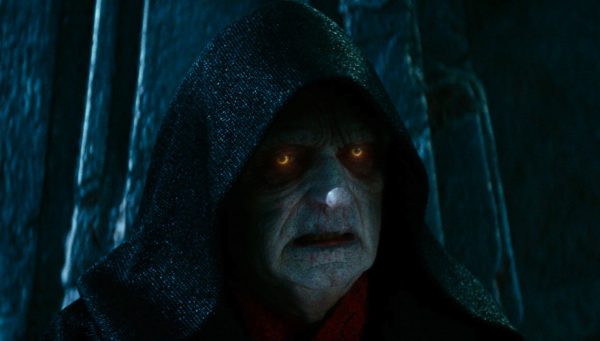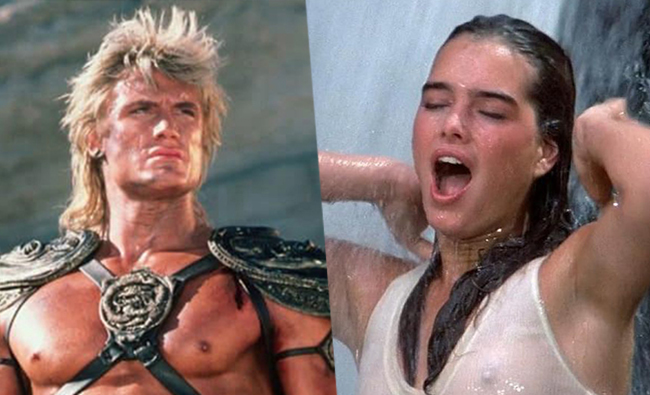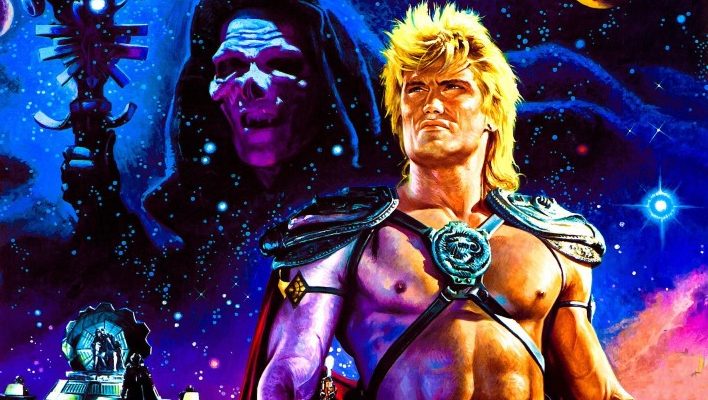Tom Jolliffe looks at the trend of excessive running times in blockbuster movies…
You make your way to the cinema, you’re bang on time. Then the movie starts right? Nope. 20 minutes of trailers, adverts and P.S.As about turning your phone off, which half the audience misses, because they’re looking at their phone. Finally the blockbuster slice of escapism begins, you’re halfway through the vat of soda you’ve remortgaged your house to buy, the first inklings of needing a tinkle emerge, but you can make it till the end…or can you? This breezy slice of blockbuster entertainment keeps going, and going, and going. So much fan service and so many diversions to cram in, among a (usually) simple plot, and by the time the film finishes, you’ve missed Christmas. Once you successfully reawaken your legs through acupuncture (note, bring your own kit) you can finally leave the auditorium and head back to your car. You check the parking charge, time to remortgage again.
I recall laughing at the plight of local patrons at my nearest cinema (I’m a sadist). The nearest car park, something of a publican snare has a maximum stay of 3 hours. Some had foolishly and optimistically tried to fit a movie and meal within that time. Others had simply overstayed because the combination of movie/trailers/P.S.As etc had kept then in for over 3 hours, so suddenly you’re hit with a fine. Lengthy running times aren’t a new thing. The grandiose epics or Westerns of the 50’s and 60’s could often run upwards of three hours. I still haven’t found the free time to watch Lawrence of Arabia (just over three hours) or Ben Hur (approaching four hours). The longest film I’ve seen was Once Upon A Time in America (just over four hours). However these films had certain differences in terms of pacing and storytelling to the atypical modern blockbuster formula.
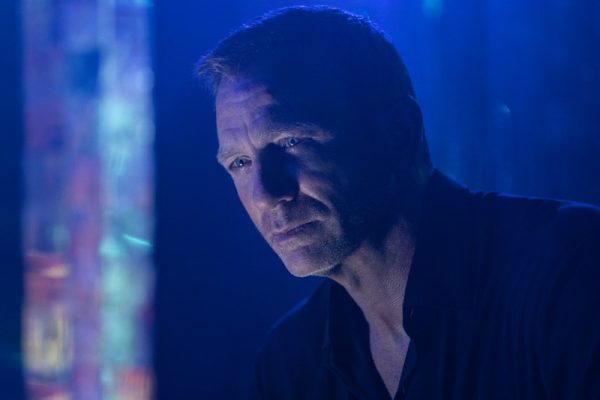
Running times have made the headlines lately too. In particular there are two polar opposites. On the one hand we have the last of Daniel Craig’s Bond films, No Time To Die, billed as the longest in the franchise to date. On the other we have Venom: Let There Be Carnage, the Tom Hardy led franchiser (that did surprisingly hefty business in its first instalment). This comes in at a lithe 90 minutes. Such brisk running times are rare, possibly suggesting that the studio has taken the scissors to a film that might be a mess (or more hopefully, it’s just been made lithe). Interestingly though, for the perpetual wait since No Time to Die was announced, we’ve had a director replaced, scripts rewritten and rewritten and whispered reports of on set problems. It strikes me as more the kind of film that might have had a producer consortium oversee the theatrical cut (but they’ll hopefully leave the film as close to Cary Fukunaga’s vision as possible). Is one too short? Is one too long?
Think of most Marvel blockbusters. It seems more the rule than the exception, for films to run comfortably over two hours now. The last two Avengers films did serve as epic amalgamations of all the Kevin Feige-driven properties coming together in a fate of the universe battle. As such, the long run times were to be expected, but at the same time, were they necessary? As much as I’ve found many of these films entertaining, they’ve often felt a bit arduous. I want popcorn escapism but get a quest for fire. Peter Jackson’s The Lord of the Rings of course, which is essentially a lengthy tale about an arduous journey, made the audience feel included in this quest, with the nine hours of running time spread across three films. What Jackson did which isn’t felt quite so much in blockbusters post 2010, is give us respite. He kept the pace plodding along nicely, but could slow things down and expertly time the moments where we are fired into exhausting battle sequences (before winding down again). His skills weren’t as keenly felt in The Hobbit trilogy though, which felt unnecessarily gargantuan, a single two hour movie’s worth of source material spread over nine hours once more. In fact it was unbearable, and too much even in the comfort of my own home.

As another example, lets compare Cap’s adventures in Winter Soldier (2 hours 16 minutes) and Civil War (2 hours 28 minutes). Winter Soldier is still one of the best standalones in the MCU. It does cross two hours but it’s more succinctly paced. The action is well spread, and never too exhausting. Indeed, one factor is that the film, whilst including the requisite cameos and nods to other pictures, is a little more focused on a more engaging personal story (as the primary focus becomes the complicated relationship between Cap and Bucky). Likewise, the action in Winter Soldier is great. It’s CGI loaded of course, because it’s a modern blockbuster after all, but not entirely without impressive practical work and a sense of being grounded. An elevator fight within the film is impressively staged and ‘intimate.’ It’s not loaded with big monsters, creatures, etc.
Then you have Civil War. It’s not seemingly that much longer, but it feels significantly longer. It feels messy. There’s too much going on. The personal battle shifts a little bit more to a pitched battle of ethos between Iron Man and Cap, but feels perhaps a little too politically minded, whilst being contradictory and confused (because neither is on the side of righteous). Then we’re having to introduce Peter Parker, set up the Avengers Royal Rumble, let Ant Man say hello, and reinforce the winter soldier story. Despite some good things and fine performances, the structure is all over the place and it then feels a bit more arduous. I’ve often found in some of these films (which can relate to other franchises) that occasionally a film can frustratingly divert away from something interesting to give us an extended section of fan service. The action is also thematically bigger in Civil War, more ‘alien’ and less intimately focused, which then also means sequences are more outlandish, more CGI heavy and go on (and on, and on). Okay, for an End Game for example, where you know you have to be prepped for something exhausting, you expect it. You can strap in for that rollercoaster, preemptively popping the ibuprofen for the impending migraine three hours later.
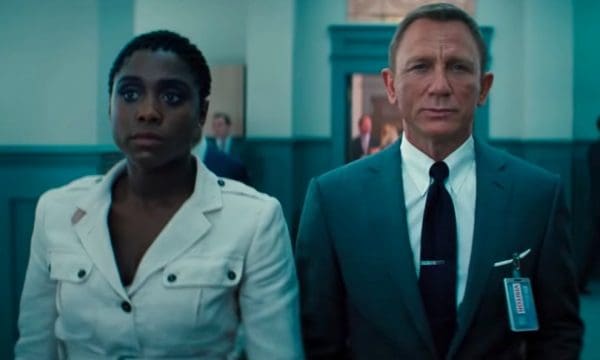
I appreciate we’re having an extended goodbye to Daniel Craig’s tenure in the next Bond. In fact it could well be a goodbye to James Bond in the guise of this character as we know him. Can the Bond of the Fleming world and 50 year old films, whose attitudes haven’t changed a great deal in that time, still work in the coming decades? Would a woke Bond work? Is Bond done with? Another debate entirely, but No Time To Die has served up an array of action packed trailers and promises of finally bringing several of Craig’s plot strands (dating back to Casino Royale) full circle. Whatever is delivered I can’t shake the feeling that 163 minutes is overstuffed. After all, Bond’s personal arc in the moody guise of Craig has already circled and repeated. The battle with super villain du jour has a certain interest level too. I can’t help but feel with a number of returning people of interest from Spectre, that a lot of the movie, as with pretty much everything post Casino, will be pre-occupied with what’s happened before.
Is it just me who finds it tiresome to keep repeating the complex relationship between Bond/Vesper/Spectre? The dynamic between Bond and Madeleine Swann (Lea Seydoux) wasn’t that engaging in Spectre, lacking in chemistry and spark (and repeating much of the Vesper/Bond angle). Seydoux is great, but has almost suffered from Craig’s half hearted performance in Spectre (that could change in his final fling), but Eva Green generated so much of that spark and chemistry herself, alongside an actor keen to impress and jump from also-ran to A-lister. Spectre I found a chore anyway. It was messy, unfocused, jumpy and never quite settled into what it wanted to be. It kept leaping around (and back to old characters), and the set pieces (great opening aside) didn’t really grip (it really underutilised Bautista too). At two and a half hours it was a slog. No Time to Die has a further 15 minutes.
For the sake of balance of course, many of the classic era Bond stretching through Connery to Bond were also fairly lengthy, and sometimes dragged given an increasing lack of character depth for someone who was essentially made to be quite two dimensional. Even in some of my favourite Bond films, they can meander around filler, or repeated gags about Bond’s bed hopping antics. If Craig’s last entry does indeed lag in the middle as we await a gadget laden car chase, then it’s perhaps largely in keeping with the franchise. We tend to remember ski jumps off mountains, lasers up the gonads, ejector seats et al, over moments of reflection, stakeouts, meetings etc. Like many blockbusters too, action scenes are here to thrill, to evoke a feeling of excitement. The modern trend now is that many of these scenes can run for 10-15 minutes alone, of relentless carnage. Impressive technical feats as they are, this can still culminate in a kind of exhaustion that isn’t always enjoyable, especially when an associated blur and disconnection from reality that CGI still has, can feel irksome in excess (or maybe I’m old). I do increasingly find though (Star Wars, I’m looking at you) that the erratic nature and jumpy narratives of these films are only just held together by the web of action scenes littered throughout. Star Wars: The Rise of Skywalker (2 hours 22 minutes) as an example was an appalling mess of conflicting ideas. Legitimately dreadful given the cost of it, but seemingly endured because it threw eye popping ‘spectacle’ around generously. Modern audiences do seem to accept the occasional lack of any narrative cohesion if there’s enough visual chaos.
In the age of streaming, binge watching TV shows, we do have a certain ingrained tolerance in sitting down for a whole afternoon of watching a show, or maybe a long film, or a couple of films. Of course at home you can pause, order a pizza, have a loo break, watch nut naked, or whatever you please. In the cinema, on seats built for number and function over comfort (even the ones billed as being ‘more comfortable’), you’re stuck for three hours until numb-ass sets in. There are many points of contention in the world of the theatrical experience. One such is people talking, or looking at their phones during a film. Granted it is annoying, and it’s something most people do when watching at home. To give them a partial defence (only very partial, string em all up I say and obliterate their phones with Thor’s hammer), the length and meandering, unfocused nature of a lot of those 2.5 hour+ films often don’t grab an audience in the entirety that great films will. Sure 90 minutes may feel too short for a blockbuster. It may leave an audience feeling like they’re not getting money’s worth. That their trip out has ended before it’s begun, but on the flipside they may leave having given it full attention, with buttocks in tact and having not had to take three loo breaks and 10 Facebook diversions. The quality of film is indeed a factor, but even some fine films inevitably feel like significant chunks could have been trimmed (The Irishman, though intermittently enthralling, was an hour too long at least).
What are you views on blockbuster running times these days? Are they too long? Can you endure films that push three hours? Let us know your thoughts on our social channels @flickeringmyth…
Tom Jolliffe is an award winning screenwriter and passionate cinephile. He has a number of films out on DVD/VOD around the world and several releases due out in 2021/2022, including, Renegades (Lee Majors, Danny Trejo, Michael Pare, Tiny Lister, Nick Moran, Patsy Kensit, Ian Ogilvy and Billy Murray), Crackdown, When Darkness Falls and War of The Worlds: The Attack (Vincent Regan). Find more info at the best personal site you’ll ever see here.





